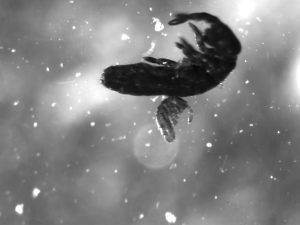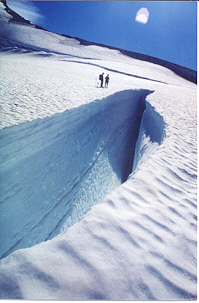

Crevasses: Open because of an acceleration of the glacier. This often happens where the slope increases. They are seldom more than 100 feet deep in the North Cascades. Here the annual snow stratigraphy is evident..
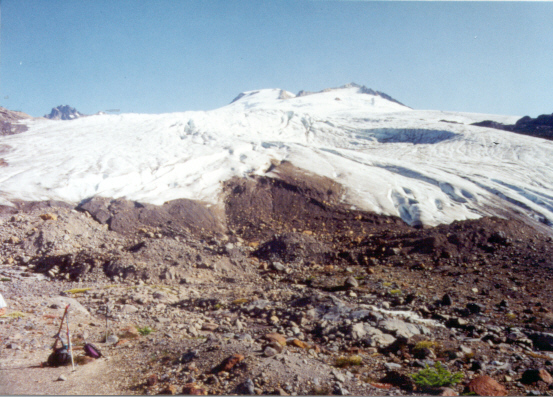
The Ablation Zone: is the section of the glacier where melting dominates. By the end of the summer this area is exposed glacier ice
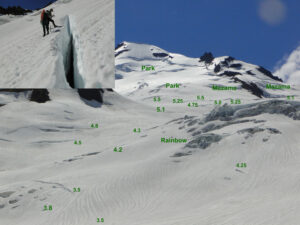
The Accumulation Zone: is the zone of the glacier where snowfall exceeds snowmelt.
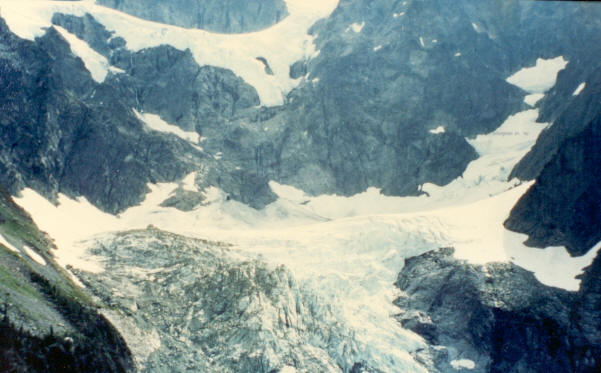
An Icefall is an area of rapid movement on a steep slope with extensive open crevassing.
A Moraine is a pile of debris carried down glacier and dumped at its end-terminus or lateral margin.
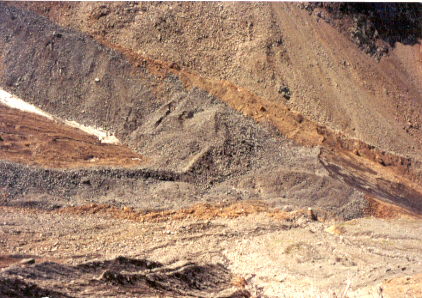
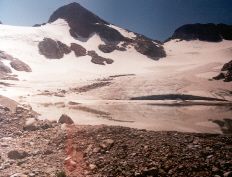
A Stagnant Glacier is a glacier that is not moving significantly, notice lack of crevassing
An Active Glacier is moving at reasonable pace has crevassing and is eroding its bed.
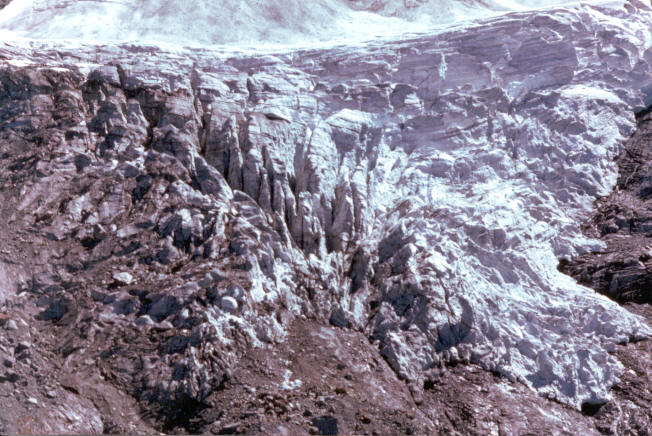

Glacier Runoff such as this stream draining Sholes Glacier is the melt from the entire glacier. It is highest on warm dry days when runoff from other sources is at its lowest.
Glacier Flour causes the blue green color in this Lake on Mt. Daniels. The flour is clay sized particle resulting from the glacier eroding the rock at its base.
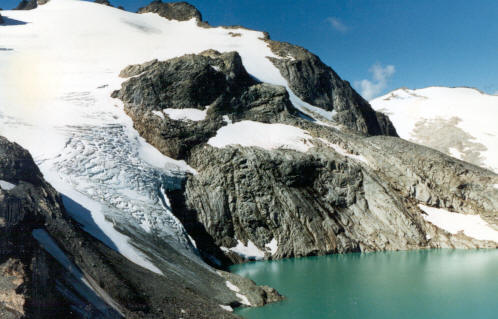
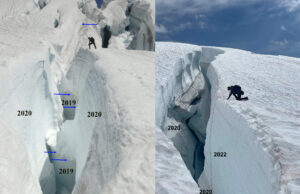
Crevasse Stratigraphy Like reading tree rings the annual snow layers are visible in crevasses and can be used to determine annual snow accumulation.
Lateral Moraines mark the edges of a glacier. In this case the lateral moraines extend well below the terminus of the current Kennedy Glacier, marking its maximum size in the Little Ice Age.
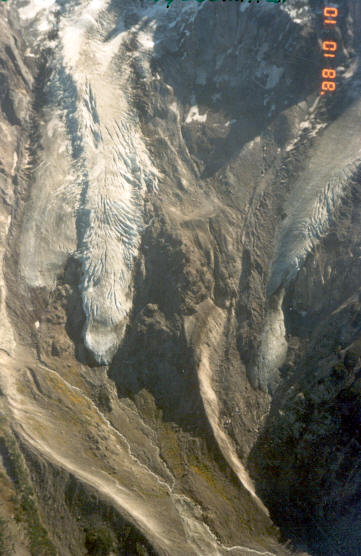
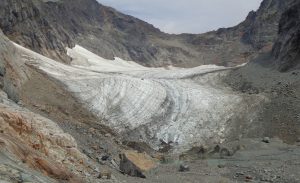
Terminus is the end of the glacier.
Proglacial Lake is a lake beyond the terminus of a glacier.
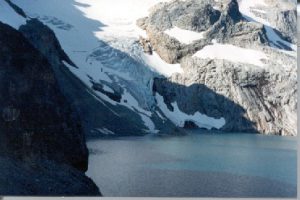

Channel cut by Supraglacial stream on the Rainbow Glacier, this type of stream is on the surface of a glacier.
Glacier golf is a game played with rocks and sticks across rough alpine terrain. 1995 Mt. Daniels Open. Eventual Champion Bill Prater left examines form of Mauri Pelto about too tee off over the water hazard.
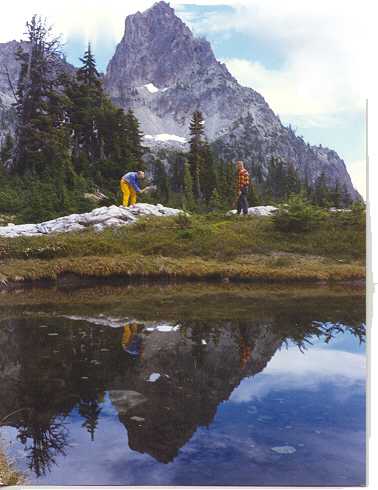

Red Snow Algae is a key food for glacier ice worms and grows on the surface of glaciers in summer, here on Rainbow Glacier, Mount baker
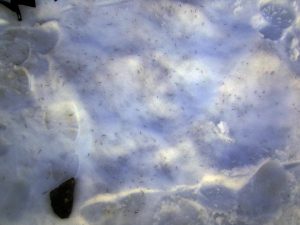
Ice Worms live on glaciers appearing largely in the evening when solar radiation is at a minimum. We found that over a billion ice worms inhabit a single glacier.
Collembola- Springtails-Snow fleas: Most species of Collembola found on glaciers of the North Cascades are also found off glaciers, on snowpack, on pools of water, or in duff in the forest. At least one kind of Collembola (here referred to as the “Behemoth” (Agrenia n.sp.)) appears to occur only on the glaciers of our region — not off glaciers, and not in other regions.
